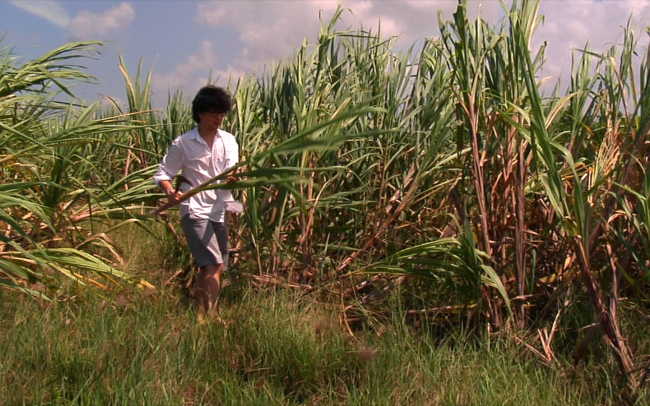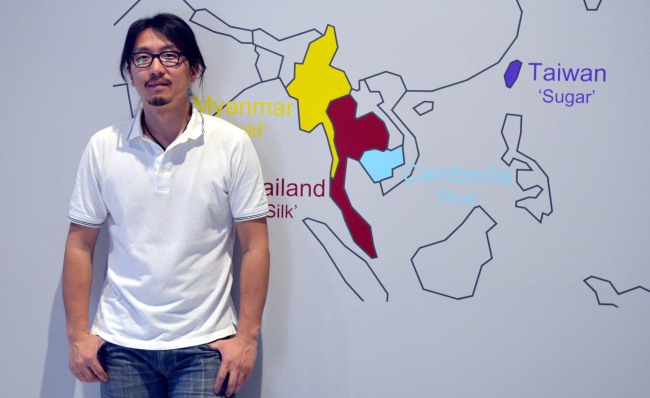Artist Lee Wan discovered one day that the ingredients of the bread and carrot juice he had for breakfast came from more than 10 countries. The bread was made with flour from the U.S. and cooking oil from Malaysia, baked in China and sent to Korea. For him, the process was incomprehensible and even seemed inefficient. To understand the complex system behind his breakfast, he thought he had to become part of the process.
“I decided to become a producer,” Lee said in an interview with The Korea Herald on Tuesday at Leeum, Samsung Museum of Art.
 |
A captured image from Lee Wan’s video work “Made in Taiwan.” (Leeum) |
Last year, he searched for the very origins of the ingredients. He flew to Taiwan and visited a sugarcane farm, where the sugar in his carrot juice was produced. For a month, he worked to produce sugar, a sugar bowl and a spoon. A video on display at the museum as part of the “ArtSpectrum” exhibition shows him engaged in sugar making. The exhibition showcases works by young promising Korean artists until June 29.
In the video, he cuts sorghum with a sickle, peels it, grinds it with a stone and extracts liquid sugar. He even makes a ceramic sugar bowl and a stainless spoon. Next to the screen is displayed a small bowl holding liquid sugar and a spoon.
The sugar-making project taught him more than how to make sugar from scratch. He began to understand the socioeconomic dynamics of Southeast Asia from the perspective of a manufacturer.
 |
Artist Lee Wan poses in front of his work exhibited at Leeum, Samsung Museum of Art, Tuesday. (Kim Myung-sub/The Korea Herald) |
“People will look at what I do and call me weird and crazy, but the project is significant in that it teaches me how the world works and problems of unfair distribution,” he said.
He learned that the sugar industry in Taiwan has been the driving force of the country’s economic development. The origin of the industry can be traced back to the Japanese colonial era when Japan industrialized Taiwan’s traditional sugar production.
In his videos, he offers detailed analyses of Southeast Asian societies changing under the outside influence of capitalism. “In Myanmar, people use smartphones before they have electricity at home,” he said.
He then went on to Thailand, Myanmar and Cambodia to track the origins of the ingredients. At Thai silk company Jim Thompson, he made a silk jacket. In Myanmar, he visited a gold mine run by a Chinese company and extracted 3 grams of gold worth $150 over his three-week stay. The silk jacket and the gold are also on view next to the screens showing the processes of making them.
Currently, his rice project is underway in Cambodia. There he rented a 0.16-hectare rice field for just $50 and paid another $50 for a farmer to take care of his rice for him. He plans to visit Cambodia sometime in June to harvest. “I will cook the rice for people coming to my exhibition someday,” he said.
The artist plans to visit a couple more countries in the latter half of this year to complete the “Made In” project. “My goal is to recreate the breakfast that inspired me to embark on the project,” he said.
A sculpture major, Lee has used various mediums such as video and installation. He said he felt at one point that sculpture lacks something in delivering his ideas to the audience.
His previous works have sought to break the common perception of objects through various elements of sculpture. He made a baseball with chicken meat. To reflect the reality that everything is judged by a common standard, he calculated the average weight of common objects such as a chair and a table and made each object weigh the same by cutting and adding.
His next project seems more complicated. “My next project is about imbalances in distribution of money. I will trace the flow of cash in the financial market in New York,” he said.
By Lee Woo-young (
wylee@heraldcorp.com)









